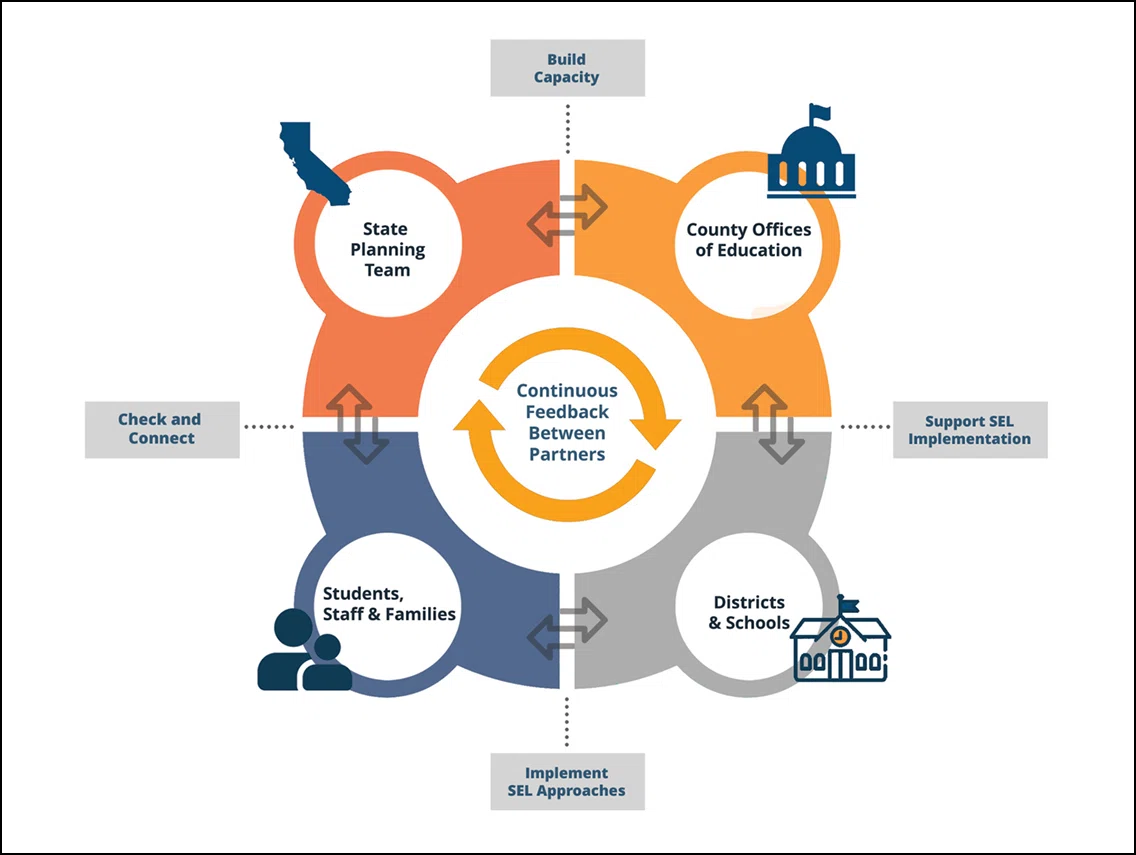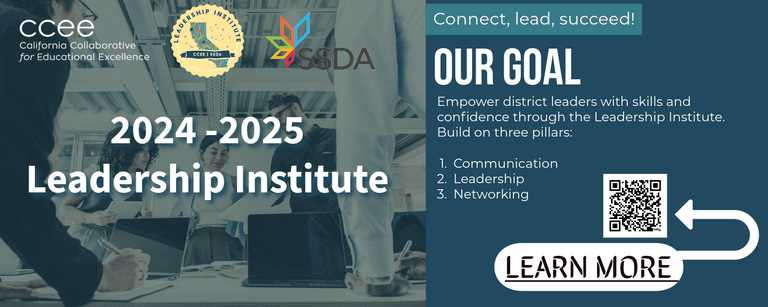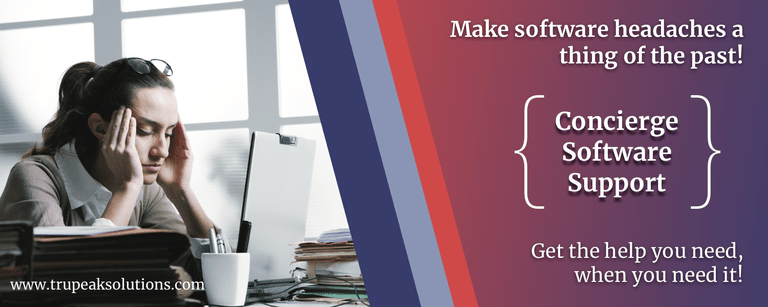How school and district leaders can ensure SEL success
June 10, 2024
The following article was provided by UC Berkeley’s Greater Good Science Center.
Hundreds of studies show that social and emotional learning has positive outcomes for students, adults and school communities. Still, there’s scant guidance for implementing SEL in schools over a wide geographic area. How can K-12 public school communities work together to improve SEL implementation across schools, districts and more?
Since its launch in 2022, CalHOPE Student Support has successfully done this in California. A team of educators, administrators and academicians implemented an SEL framework over the entire state, taking a “whole-community” approach to student and educator mental health and well-being. The initiative provides many lessons school and district leaders can learn from in order to work together and give students the resources they need to thrive in today’s learning environments.
The collaboration started with a shared vision. In January 2019, several people took key state-level leadership positions, championing SEL implementation in K-12 education, including Gov. Gavin Newsom, State Superintendent of Public Instruction Tony Thurmond and State Board of Education President Linda Darling-Hammond.
Together, the group launched a statewide effort to engage stakeholders in conversations around the barriers, needs and goals of implementing SEL in schools and classrooms. The group heard from nearly 800 educators, community partners, youth and families, generating recommendations for educational leaders, including:
- Make SEL the cornerstone of California’s education system.
- Align SEL efforts between state, county and district levels.
- Emphasize SEL support for adult capacity-building.
- Invite, hear and lift up less powerful voices to co-design solutions for schools.
These conversations happened during the COVID-19 pandemic, which the Little Hoover Commission called a “perfect storm of stress, anxiety and trauma, exacerbating a pre-existing crisis in children’s health.”
Because of this and after gathering insights from educational leaders, CalHOPE Student Support became a multi-stakeholder, partnered initiative — across sectors, regions and system levels. The goal: to help California educators in the unprecedented task of bringing children back into and improving the normative routines of learning and development by strengthening capacity for SEL implementation statewide.
CalHOPE Student Support uses a Community of Practice (CoP) model to engage, inspire and bring together educators and school staff across the state. In addition to a monthly, statewide CoP with leaders from all 58 county offices of education (COEs), the Greater Good Science Center at UC Berkeley partners with the Sacramento COE to facilitate specialized CoPs designed to support education professionals in nurturing their own well-being. From classified staff and paraprofessionals to expanded learning staff to school-based clinicians and counselors and more, these free-of-cost CoPs, called Room to Breathe, recognize that SEL truly necessitates a holistic approach to ensure the well-being of everyone in our school communities. Room to Breathe promotes well-being by sharing practices on — and the evidence-based benefits of — active listening, gratitude, self-compassion and courage. In this way, the CoP participants co-create caring, compassionate, equitable and connected learning communities.
Along with the statewide CoP and Room to Breathe, this initiative produced the California Social-Emotional Learning Content and Facilitation Guide, a series of free, self-paced resources designed for California education professionals for their learning or professional development within California schools and districts. It also created direct partnerships with schools, and training in routines and structures of systemic implementation.
Based on ongoing evaluations, the team gained several insights to grow what’s working and further develop where it’s needed. These lessons include:
- Beyond building SEL-specific capacity, also build general capacity for change-making.
- It’s vital to meet people — COEs, districts, schools, staff and students — wherever they’re starting from, as they may vary considerably in their pre-existing capacity and structures for SEL implementation.
- Trust and reliance on each other are key, given fast-paced, collaborative decision-making within and between bureaucratic institutions while navigating uncertainty and shifting priorities.
- The process of embedding authentic SEL processes into the work of SEL implementation isn’t linear or ad hoc; it should be deeply integrated and threaded throughout the acts and experience of change-making.

Diagram of CalHOPE’s Continuous Improvement Cycle.
In addition, educators and school staff deeply appreciate allowing themselves “room to breathe.” The specialized CoPs received overwhelmingly positive feedback, including, “I enjoyed this series so very much. The hour and a half flew by” and “I wished this was forever.” By providing a positive, facilitated forum for learning practices that promote listening, courage, self-compassion and gratitude, participants leave with a greater sense of well-being and energized to bring the evidence-based practices back to their schools.
As the program continues, the next Room to Breathe session will be specifically for school and district leaders. To learn more about the full implementation, read the report, “‘We will build together’: Sowing the seeds of SEL statewide,” at bit.ly/SELstatewide, and visit the Room to Breathe webpage at bit.ly/RTB-CoPs.
CA education professionals at every level also have free, ongoing access to evidence-based learning modules through Greater Good Science Center’s education program. For more information, see bit.ly/SEL-learning.
Greater Good in Education is produced by UC Berkeley’s Greater Good Science Center. The GGSC studies the psychology, sociology, and neuroscience of well-being, and teaches skills that foster a thriving, resilient and compassionate society. Visit ggie.berkeley.edu to explore over 300 free, evidence-based practices around social-emotional learning, mindfulness and character education.





